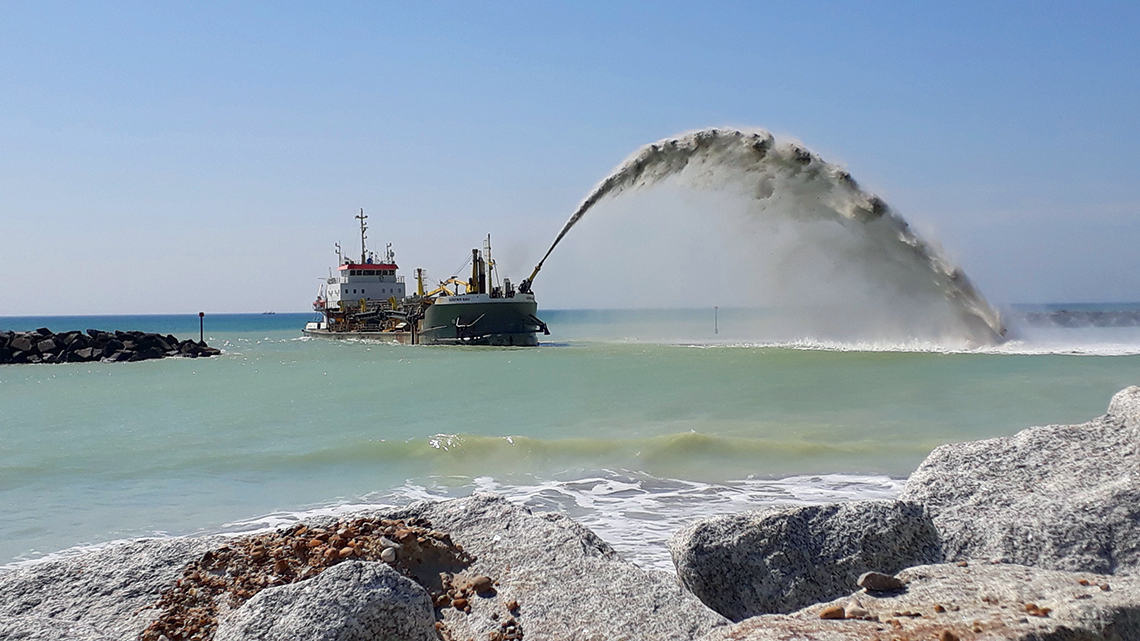Market Size of Sand Dredgers
The global market size for sand dredgers is not a publicly standardized metric, as it can vary greatly depending on the source and the specific market definitions used. However, sand dredging is a crucial part of both the construction industry and maritime maintenance, driving substantial investments in dredging equipment and services. The market size can be inferred by examining the overall dredging market, which includes activities like maintaining waterways, harbor dredging, land reclamation, and coastal protection. As of recent estimates, the global dredging market hovers around several billion dollars annually, with sand dredgers constituting a significant segment due to the high demand for sand in construction and land reclamation projects.
Market Forecast for Dredging Companies
The forecast for dredging companies appears robust, driven by global urbanization, increasing maritime trade, and coastal development. Climate change and the associated need for coastal protection and flood management also contribute to a growing demand for dredging services. Regions prone to flooding or those undergoing large-scale infrastructural developments are likely to see heightened activities, promising a steady growth trajectory for the dredging market over the next decade.
Market Dynamics of Sand Dredgers
Key Drivers
- Urbanization and Infrastructure Development: Rapid urban growth, especially in Asia and Africa, fuels the need for sand for construction purposes, directly boosting the demand for sand dredgers.
- Coastal Protection and Climate Resilience: Increasing sea levels and storm frequency require enhanced coastal protection measures, where sand dredging plays a critical role in beach nourishment and barrier creation.
- Expansion of Maritime Routes: With global trade on the rise, maintaining and deepening maritime channels to accommodate larger vessels is crucial, supporting the dredging industry.
Key Challenges
- Environmental Concerns: Sand dredging can lead to severe ecological impacts, such as habitat destruction and water pollution, which can impose strict regulations and operational constraints on dredging activities.
- Regulatory Restrictions: Many countries are tightening regulations around marine and riverine dredging to protect ecosystems, which can limit the operational scope of dredging companies.
- Economic Fluctuations: As dredging investments are closely tied to global economic health, periods of economic downturn can result in reduced activity in construction and maritime industries, affecting demand for dredging.
Key Trends
- Technological Advancements: Innovations such as robotic and remote-operated dredgers and the use of GPS and IoT for precision dredging are becoming more prevalent, increasing efficiency and reducing environmental impact.
- Sustainable Practices: There’s a growing trend towards more environmentally friendly dredging practices and equipment, driven by both regulatory frameworks and corporate responsibility initiatives.
- Increased Local Sourcing: Due to environmental and economic factors, there’s a trend towards using local materials and resources, prompting a more localized approach in dredging operations to reduce transport costs and environmental footprints.
Global Sand Dredgers Market: Regional Analysis
- North America: The market is driven by maintenance dredging and coastal protection, with stringent regulations focusing on minimizing environmental impacts.
- Europe: Emphasizes sustainable and technologically advanced dredging practices, with a strong regulatory framework focusing on environmental conservation.
- Asia-Pacific: The largest and fastest-growing market, driven by massive infrastructural projects, urbanization, and coastal development. Countries like China, India, and Southeast Asia are pivotal players.
- Middle East & Africa: Growth influenced by land reclamation projects and coastal infrastructure, especially in regions like the UAE and Saudi Arabia, which are expanding their coastal cities and industrial zones.
- Latin America: Development is slower but steady, with focus areas being canal maintenance and river dredging to support local economies.
In conclusion, the sand dredgers market plays a vital role in supporting global economic activities and adapting to environmental challenges. The future of the market depends significantly on balancing operational demands with ecological and regulatory considerations, leveraging technological advancements to mitigate environmental impacts while meeting the growing infrastructural needs.
